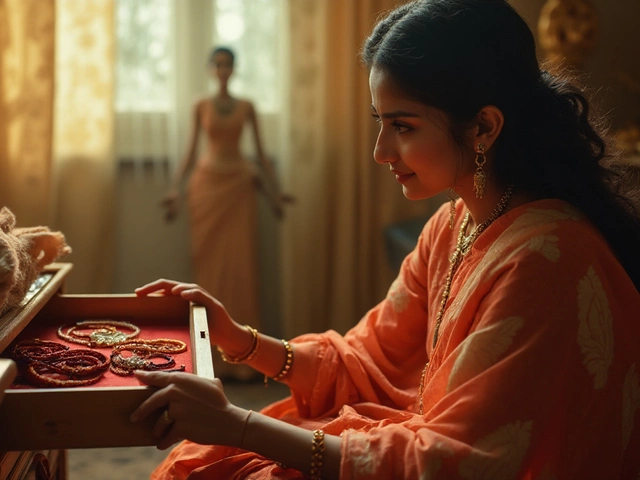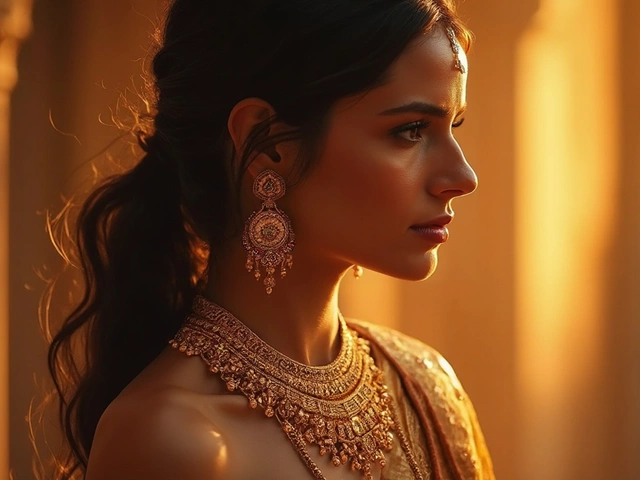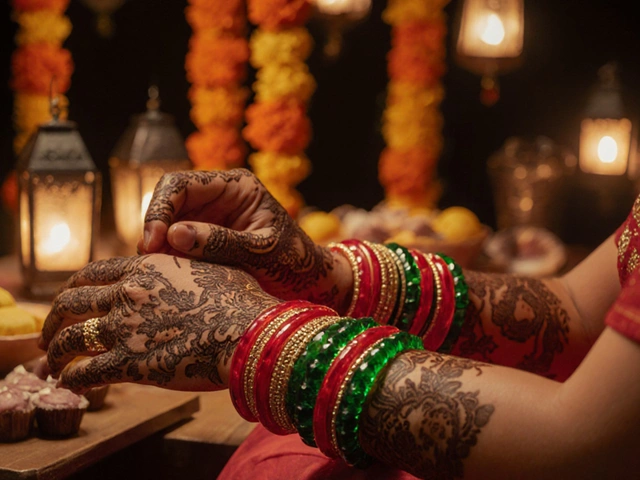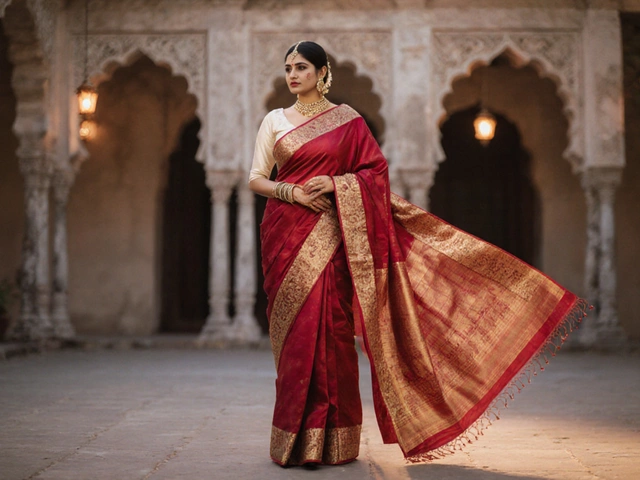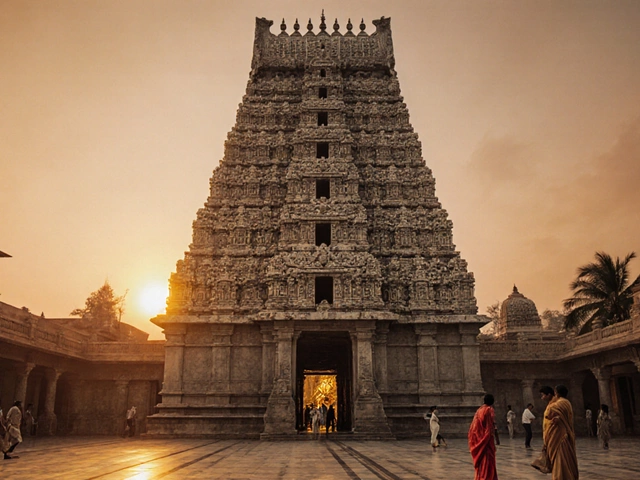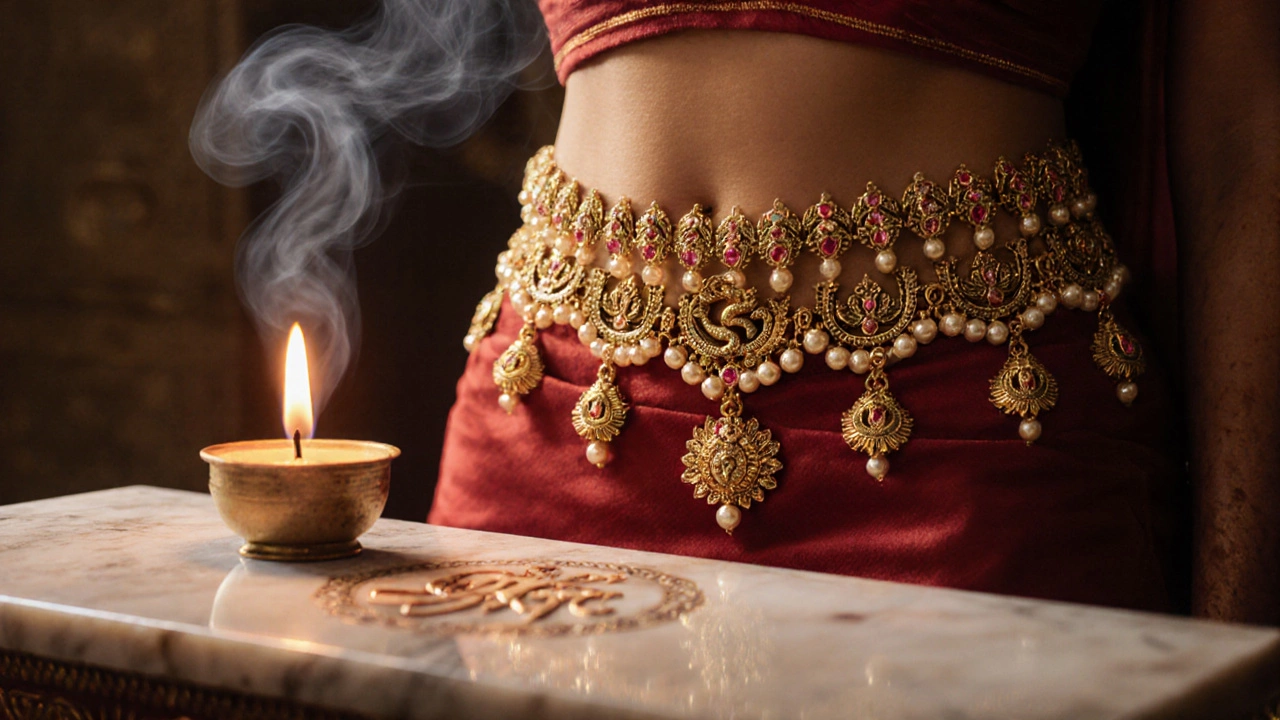
Waist Chain Cost Calculator
Calculate Your Waist Chain Cost
Estimate the cost of an Indian waist chain (kamarband) based on material type and weight. Prices are calculated using current market rates.
Your estimated cost will appear here after calculation.
About These Prices
Prices are based on current market rates (2025):
- Gold: ₹5,200 per gram
- Silver: ₹700 per gram
- Brass: ₹350 per gram
- Stainless Steel: ₹150 per gram
Quick Takeaways
- The Indian waist chain-also called akamarband or belly chain-has roots in ancient Vedic rituals.
- It symbolizes marital status, fertility, prosperity and protection from negative energies.
- Gold is preferred for weddings, while silver or mixed metals are common for daily wear and regional festivals.
- Different Indian states have distinct styles: South Indian templekamarbands are heavy and ornate, North Indian ones are lighter with pearls, and Bengali versions feature intricate filigree work.
- Modern designers are turning the waist chain into a fashion statement, pairing it with sarees, lehengas and even western outfits.
Ever wondered why you see women in India draped with a shiny chain around their hips? That piece isn’t just a decorative extra-it’s a cultural badge that carries centuries of meaning. Below we break down the history, symbolism, material choices, and the right way to wear a waist chain so you can appreciate every clink and sparkle.
Indian waist chain is a metallic ornament that encircles the waist, traditionally worn by women during special occasions and sometimes as everyday jewellery. Known in many regions as a kamarband, a belly chain, or lapa, it forms an integral part of Indian temple jewellery and bridal ensembles.
Historical Roots: From Vedic Altars to Temple Treasure
Archaeologists have uncovered bronze waist ornaments in Indus‑Valley sites dating back to 2500B.C. The earliest literary reference appears in the Vedas, where priests described a kumbha (pot) tied around the torso to signify the womb’s sacredness. As Hindu temple architecture flourished, artisans began crafting elaborate waist chains from gold and silver, embedding them with deities and motifs like the lotus, peacock feather and kundalini serpent.
During the Mughal era, the waist chain evolved into a status symbol. Royal women wore massive gold kamarbands studded with rubies and pearls, a practice that trickled down to the aristocratic families of South India. By the 19thcentury, regional guilds in TamilNadu, Karnataka and Kerala specialized in “temple jewellery” - a category that still includes the waist chain as a centerpiece for worship‑related attire.
Symbolism: More Than a Sparkling Loop
Four core ideas drive the waist chain’s popularity across India:
- Marital Status: In many communities, a gold kamarband is given by the groom during the wedding ceremony, signifying the bride’s new place in the family.
- Fertility & Prosperity: The waist mirrors the womb; decorating it is believed to invite fertility and wealth.
- Spiritual Protection: Ancient Ayurveda texts claim that a metal band around the waist balances the apāna (energy) channel, keeping negative forces at bay.
- Social Identity: Different designs instantly reveal a woman’s region, caste or community - a visual language understood across villages.
Regional Styles: One Chain, Many Faces
India’s cultural mosaic means the waist chain looks dramatically different from Delhi to Madurai:
- South India (TamilNadu, Kerala, Karnataka): Heavy gold kamarbands layered with temple motifs, often three‑tiered. A classic piece may weigh up to 200grams.
- North India (Punjab, Rajasthan): Lighter silver chains embellished with full‑moon pendants and pearl strands, suited for festive dances.
- West Bengal: Delicate filigree work in gold or mixed metals, sometimes combined with tiny bells that jingle during rituals.
- Gujarati & Marwadi: Double‑row chains with intricate meenakari enamel and tiny beads, perfect for the “Gharchola” wedding dress.
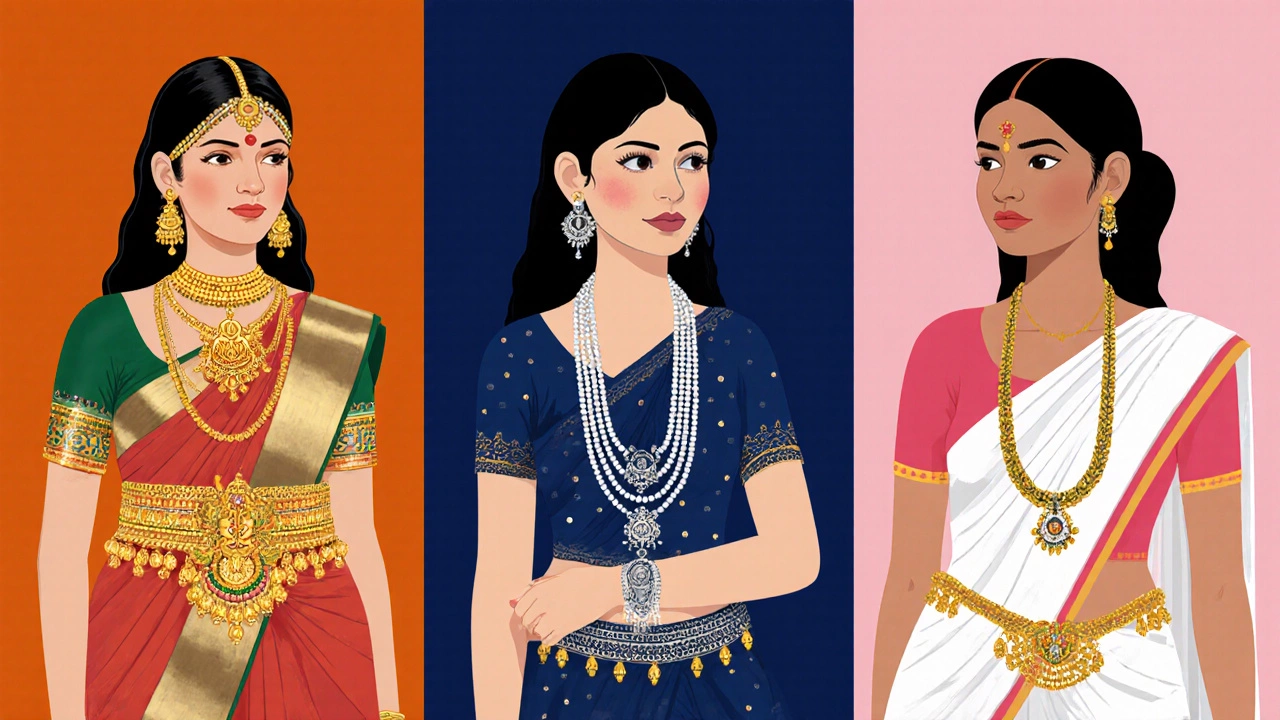
Materials & Design Choices
While gold remains the royal favorite, silver, brass, and even stainless steel are common in contemporary pieces. The choice influences price, weight, and cultural meaning.
| Attribute | Gold | Silver |
|---|---|---|
| Traditional Significance | Marital & auspicious occasions | Everyday wear & regional festivals |
| Typical Weight | 150‑250g | 80‑150g |
| Price (2025, per gram) | ≈₹5,200 | ≈₹700 |
| Allergy Risk | Low (pure gold) | Higher (nickel content in alloys) |
| Common Motifs | Lotus, deity heads, kundan stones | Pearls, moon pendants, filigree |
Designers also incorporate gemstones-emeralds for fertility, rubies for vigor, and diamonds for sparkle. Some modern waist chains feature tiny lockets that hold personal charms, merging tradition with personal storytelling.
When & How to Wear a Waist Chain
Knowing the right moment and technique can make the difference between a graceful accent and an uncomfortable accessory.
- Wedding Day: The bride’s mother or the groom’s family presents the gold kamarband after the kanyadaan (giving away of the bride). It is fastened just above the navel, aligning with the agni (fire) altar.
- Festivals (Navratri, Diwali): Silver or brass chains are worn with traditionalsarees or lehengas, often paired with bangles for a harmonious look.
- Daily Wear: Light silver chains can be slipped on over a kurti or Western blouse; they’re kept loose enough for ease of movement.
- Rituals: During temple visits, a waist chain is believed to keep the wearer’s energy grounded, especially when performing a darshan (viewing of the deity).
To put it on correctly, follow these steps:
- Stand straight and locate the natural waist-just above the hip bones.
- Hold the chain at its clasp, ensuring the decorative end faces outward.
- Wrap it around once, aligning the middle of the pendant with the navel.
- Secure the clasp, then gently pull the chain to make sure it sits comfortably without digging into the skin.
Health Beliefs: Ayurveda’s Take on the Waist Chain
Ayurvedic practitioners describe the waist as a power point for the apāna (downward) energy channel. Wearing a metal band is thought to:
- Support core posture, reducing lower‑back strain.
- Stimulate circulation around the abdominal organs, aiding digestion.
- Balance the doshas (Vata, Pitta, Kapha) by providing a grounding ‘metallic’ element.
While scientific evidence is limited, many women report feeling more confident and “centered” when the waist chain is in place.

Choosing the Right Waist Chain: A Quick Checklist
- Occasion: Gold for weddings, silver for festivals, light metals for daily wear.
- Weight Comfort: Test the chain on a flat surface; it should feel secure but not press into the skin.
- Design Compatibility: Match motifs with your outfit’s embroidery (lotus with silk saree, pearls with chiffon).
- Allergy Check: Opt for 22‑carat gold or pure sterling silver if you have metal sensitivities.
- Budget: Calculate total cost using current gram rates (see table above) plus any gemstone markup.
Modern Twist: Waist Chains on the Global Runway
From the streets of Mumbai to New York Fashion Week, designers are re‑imagining the waist chain. Street‑style influencers pair thin gold chains with ripped jeans, while haute‑couture houses embed LED lights for a futuristic glow. The key is preserving the symbolic “circle of life” while experimenting with material-think recycled brass or acrylic beads.
Frequently Asked Questions
What material is best for a wedding waist chain?
Gold, especially 22‑carat, is the traditional choice for Indian weddings because it symbolizes purity, wealth, and permanence. It also aligns with the auspicious rituals performed during the ceremony.
Can men wear a waist chain?
Yes. In many South Indian cultures, men wear a simple silver or gold kamarband during festivals and temple visits. It’s less common than for women, but the cultural significance remains the same.
How do I clean a gold waist chain without damaging it?
Soak the chain in warm water with a few drops of mild dish soap for 5‑10 minutes. Gently brush with a soft toothbrush, rinse under running water, and pat dry with a lint‑free cloth. Avoid abrasive cleaners or ultrasonic machines.
Is there a specific way to store a waist chain?
Store it in a soft jewelry pouch or a dedicated compartment of a jewelry box, separated from other pieces to prevent scratches. Keeping it in a dry environment preserves the metal’s shine.
Do waist chains have any spiritual benefits?
According to Ayurveda, a metal band around the waist can balance the apāna energy channel, supporting digestion and grounding the body’s subtle energies. While scientific proof is limited, many practitioners and wearers report feeling more centered.


